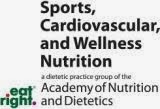As you walk into the Vitamin Shop or GNC there are walls stacked with supplements, natural vitamins, whey protein, casein protein, soy protein and the protein powders that broadcast their benefits to putting on more muscle mass & enhance your performance. You then grab a random protein container, turning to the nutrition panel and a list of 20+ vitamins, minerals, long amino acid names...
Overwhelmed with what to buy, you ask yourself, "what protein is what?"
Before we look into whey protein supplement, let's take a quick glance at some of the general functions that protein has within the body.
1. It helps provide structure for your bones, teeth and skin (especially the collagen within your skin)
2. It's part of enzymes used to catalyze chemical reactions in metabolism
3. In the cell membrane, it aids in bringing glucose within the cell to provide energy
4. In movement, it builds the muscle fibers actin and myosin
5. It also helps in immunity as part of the antibodies to fighting infections
WOW... who knew protein did more then just build muscle! After doing some research to understand some of the uses of whey protein specifically, I used references from my advanced nutrition text book and journal articles to understand what whey protein is, when to use it and if it has any benefits to increase strength and muscle mass in strength training.
Now to answer the question, "What is Whey Protein & What Does It Do?"
Whey protein, also known as the "fast" protein due to it's quick delivery to the muscles, contains all the essential amino acids required for a daily diet that can enhance athletic performance and improve body composition. It provides the body with branched chain amino acids (BCAA), which for athletes, means BCAA's are the first ones used during exercise and resistance training. Lastly, thanks to the antioxidant glutathione, it promotes a healthy immune system!
In the gym you see guys/gals with their shake bottles that contain added whey protein smoothie blended with chocolate powder and a banana, yielding a protein rich treat (it really does taste good, too!). As I'm running on the treadmill, I observed that some were consuming about 16 oz of this protein drink within 30 minutes after their work-out. Curious as to why, I came up with these discoveries in my research:
- Resistance training includes weight bearing exercise causing micro tares of the muscle fibers. Whey protein consumed after a strength training session has been reported to cause muscle fiber hypertrophy and yield a greater work performance, due to its quick delivery to the muscle.
- In another article looking closely at elite wrestlers, it stated that the best time to have protein is immediately after the workout because the body needs the raw material to rebuild and recover. Leucine, one of the BCAA's in whey protein, stimulates signaling pathways to stimulate muscle protein synthesis, quickly rebuilding the muscle and development of new tissue.
To reap the benefits of whey protein, consume it immediately after your strength training routine. Just keep in mind you really want food first, balancing all the needed nutrients from carbohydrates, proteins and fats and if need be to enhance recovery, consume a whey protein supplement (most forms are in powders) on the days you have strength training. For your days of rest, focus on eating a well balanced diet being sure to include legumes, beans, nuts, fish and lean meats as some of the main sources for protein. To find out more sources and daily requirements for protein visit my plate, athttp://www.choosemyplate.gov/food-groups/protein-foods-amount.html#
Sources:
(1) McGuire, Michelle., Beerman, Kathy A. "Nutritional Sciences: From Fundamentals to Food," 2009.
(2) SHARAWY, A. (2013). THE EFFECTS OF A PRE- AND POST-EXERCISE WHEY PROTEIN SUPPLEMENT ON PROTEIN METABOLISM AND MUSCULAR STRENGTH AMONG ELITE WRESTLERS. Ovidius University Annals, Series Physical Education & Sport/Science, Movement & Health,13(1), 5-10.
(3) Weisgarber, K. D., Candow, D. G., & M. Vogt, E. S. (2012). Whey Protein Before and During Resistance Exercise Has No Effect on Muscle Mass and Strength in Untrained Young Adults. International Journal Of Sport Nutrition & Exercise Metabolism, 22(6), 463-469.
Christa Petersen is currently a Dietetic Technician, Registered going to school full time at Montclair State University in Montclair, NJ on the road to becoming a Dietitian and applying for dietetic internships for the fall 2013. She is an outdoorsy person who can be found running, biking, walking, swimming, playing soccer or pursuing anything from pushing high intensity cardio-workouts all the way down to relaxing yoga. One of her favorite hobbies aside from working out is creating healthy recipes and cooking them! Just recently she created a blog named "Teaspoon of Delight" sharing with the public creative recipes, nutrition facts and journal articles to keep others on tract to leading a healthy lifestyle. She cannot wait to become a Registered Dietitian and share her passion with others as a full-time career!
